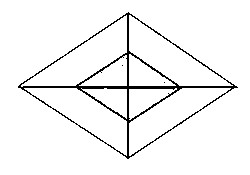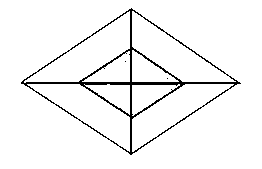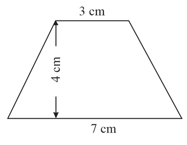The area of a rhombus is square centimetres and the length of one of its diagonals is Compute the following measurements of this rhombus.
The distance between sides is . Find the value of .

Important Questions on Area of Quadrilaterals
A long rope is used to make a rhombus on the ground. The distance between pair of opposite corners is . The distance between the other two corners is . Find the value of .
Note: In textbook, the distance between a pair of opposite corners is given in metres but that should be in centimetres.
A long rope is used to make a rhombus on the ground. The distance between pair of opposite corners is . The area of the ground bounded by the rope is . Find the value of .
In the figure, the midpoints of the diagonals of a rhombus are joined to form a small quadrilateral:

Prove that this quadrilateral is a rhombus.
In the figure, the midpoints of the diagonals of a rhombus are joined to form a small quadrilateral:

The area of the small rhombus is . The area of the large rhombus is . Find the value of .
The area of the largest rhombus that can be drawn inside a rectangle of sides centimetres and centimetres is . Find the value of .
Draw a rectangle of sides and . Draw isosceles trapezium of the same area, with the following specifications.
Lengths of parallel sides , .
Draw a rectangle of sides and . Draw isosceles trapezium of the same area, with the following specifications.
Lengths of non-parallel sides .
The area of the isosceles trapezium drawn below is . Find the value for .

